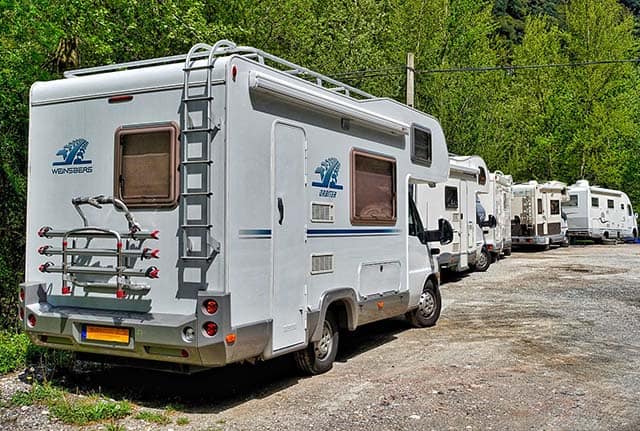Water ingress can be a nightmare for motorhome and tourer owners and therefore makes the annual habitation and damp check so important. These checks can give an early warning of any damp resulting from faulty or deteriorated body joint sealant, poor fitting or damage to the habitation door, windows, seals and locker frames.
Traditional motorhomes & tourers consist of a wooden frame wrapped in a GRP/alloy skin. This is sound but to achieve it there are numerous body joints requiring sealant and expansive use of fixing screws, alloy strip and decorative cover beading. Sealant can harden and screws can rust away: the resultant cracks can allow water to penetrate between and behind panels, often out of sight. Unfortunately once it’s visible from the interior wallboards it can be too late to prevent damage.
Newer construction methods involve fewer fixings, more high-tech bonding techniques, interlocking panels and joints, stronger plastics replacing wood and GRP/ABS underfloor protection. This allows for longer warranties, but water ingress can still happen so check the detail of your warranty. Common terms and conditions may require an annual habitation service, undertaken by a certain date and more often than not by an authorised workshop. The Approved Workshop Scheme of which we are a member is recognised by most major manufacturers.
HABITATION SERVICE
The habitation service could be considered as the motorhome’s or tourer’s MOT/safety inspection. It is not legally mandatory, but most warranties require an annual service. Whilst not all providers include the damp check in their habitation service, our Approved Workshop Scheme service check sheet includes a Damp Report with comments and recommendations and damp check percentage figures displayed on an illustrated chart.
AVERAGE METER READINGS
- Damp meter readings indicate the presence of water expressed as a percentage. The Damp Report follows the procedure:
- 0-15% are fine and not recorded because there is no cause for concern
- 15-20% require further investigation
- 21-30% indicates remedial action is possibly required. There may be signs of water ingress or evidence of moisture
- Over 30% means structural damage may be occurring and deterioration is inevitable.
We use the Protimeter professional damp and moisture meter. We first carry out a non invasive scan with the Protimeter, scanning across all internal surfaces of the unit, concentrating particularly around windows, doors and other apertures. If the readings are high, we will perform further checks to verify the reading, including Pin probe moisture checks if feasible. Sometimes high readings will merely be as a result of metal fixings and structures.
HOW CAN YOU HELP TO AVOID WATER INGRESS?
- You can help keep water out by
- Checking skirting joints, seals and screws
- Don’t use powerwashers or even hoses close up
- Keep an eye on all windows and door seals for splits, hardness and perishing
- If there is any spillage clear it all up properly. Water can track a long way on flooring and in the long term cause considerable damage.
- There could be holes from DIY add-ons etc: Roof racks, bike stands, TV aerials and any other wires
- Avoid condensation when cooking, use pan lids and open a window
- Create air flow at night, or use breathable mesh underlay for bedding
- Remember water doesn’t have to be coming from where the leak is. It could be running along pipes or any wires.
So if you have any concerns, give us a call and we can perform a damp check for you.

